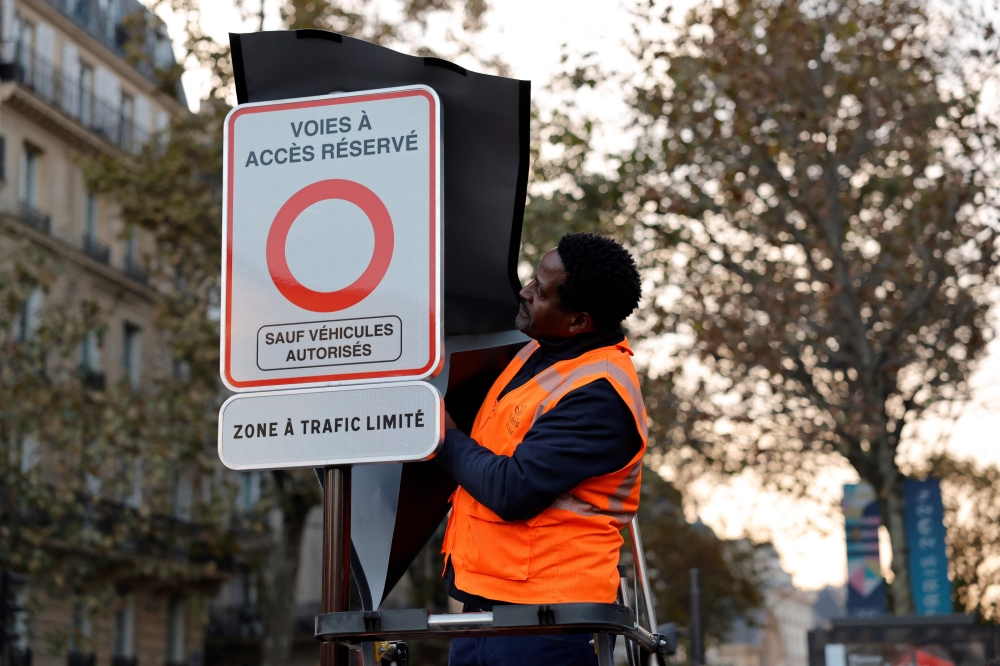KUCHING, March 26 ― Vibrant, bold, unique.
Sarawak batik is rapidly gaining popularity among Malaysians and is being widely incorporated in their daily ensemble as well as outfits for special occassions.
It is technically quite similar with the batik from Terengganu and Kelantan. Price-wise, it can hardly compete with the offerings from Indonesia, China, India or Korea.
However, its authenticity gives it an edge over the imported designs, said Azran Arip, the director of the Malaysian Handicraft Development Corporation Sarawak (Kraf Sarawak).
He said many of the batik sold in the bazaars in the streets and sometimes even at the ones at pricy boutiques could hardly be categorised as batik, as its motifs and production methods clearly differed.
He said the art of batik refers to the technique of designing patterns on a textile using wax and dye, either drawn freehand using the “canting” tool or by stamping blocks of batik motifs onto the surface of the textile.
Its uniqueness lies in the varying results. It is thus impossible for any piece of hand drawn or block-printed batik to look alike with another.
Batik is a deeply-symbolic traditional art form that originated from the Malay islands. Its ethnic motifs once represented the social status of those garbed in it.
Keeping it authentic
There are only five batik makers who produce authentic Sarawak batik; two in Kuching, two in Miri and one in Betong.
Azran said that he, along with several instructors and local batik makers, were actively advocating authentic Sarawak batik designs. This is in line with the awareness that the patterns and ethnic motifs of the designs symbolises the uniqueness of the strength of identity of the people of Sarawak.
“Batik is part of the craft industry. If factories are producing hundreds of metres of it a day, then that is not authentic batik, even if the design and motif are copied using digital print and resemble the original. It does not make it a Sarawak handicraft,” he said.
“Our role at Kraf Sarawak is to figure out how to attract batik producers and the public to use batik in their daily lives. We came up with products that appeal to our times and study current fashion so that we can meet the demands.
“The batik sarong may not be as popular anymore, because now the focus is more on clothing items for men and women, pareo skirts and products such as bags and tablecloths,” he said.
All about the design
In terms of design, Kraf Sarawak Design Unit head Tony Rantai anak Roti said they were required to conduct detailed research on traditional handicraft to ascertain its authenticity prior to introducing new designs.
He said design ideas could be adapted from the art produced by the various ethnicities in Sarawak, or what could be observed from their daily lives.
Inspiration could come from the design of the “parang ilang” (sword), terabai (fighting shield), ketapu tunjang (headgear), pua kumbu (an intricate hand-woven textile), sape (musical instrument), rattan bags, reed mats, plants or animals.
According to Tony, the motifs are first adapted into an experimental batik design before being turned into a pattern that matches the preference of batik enthusiasts.
He said each new design, prototype, order or promotional invitation sent to Kraf Sarawak would be extended to its incubator programme participants at Jalan Stadium, here. At the moment, two of them are producing batik under the textile category while three participants work with jungle harvests to produce handicrafts, souvenirs andbags.
Tony called on fans of authentic Sarawak batik to visit the Kraf Sarawak exhibition gallery at Jalan Stadium, which is open to the public Mondays to Fridays from 8am to 5pm.
Catering for batik demand
One of the participants of the incubator programme is 44-year-old Titek Sandora Haji Apit.
With over 10 years of batik-making experience under her belt, she turned the workshop provided by Kraf Sarawak into a main production site for Sandora Craft Collection, a shop managed by her sister in Plaza Astana.
Although her daily production is limited, the uniqueness and authenticity of her products kept the orders coming in.
Titek Sandora can only complete one or two pieces of batik (measuring two and a half yard each) a day depending on the intricacy of the design, but she is still able to meet demands from customers who order large quantities.
Visitors to Kraf Sarawak can also get their batik made into clothes within a short period of time through the centre's collaboration with a local tailor.
Another participant, Norhalis Isa Md Ali, 29, said the programme had helped her pave the way through a field which she felt had yet to be fully explored.
The former National Craft Institute student said Sarawak batik has become a favourite souvenir item for visitors to the state, although it was initially popularised by producers of non-authentic batik who sought to profit from unsuspecting foreign visitors.
Norhalis sold her products on a small scale and was also one of the instructors at the centre.
Meanwhile, batik aficionado Suzana Chen, who is in her 40s, said although batik from Kelantan and Terengganu were very much beloved, the ethnic prints of Sarawak batik was an offering that was as beautiful in its own way.
She believed that the Sarawak batik industry could provide stiff competition to the batik makers in the East Coast, with its handicraft fast becoming one of the must-have souvenirs for visitors to the state. ― Bernama






















